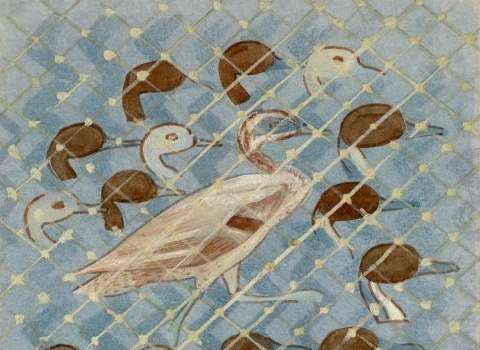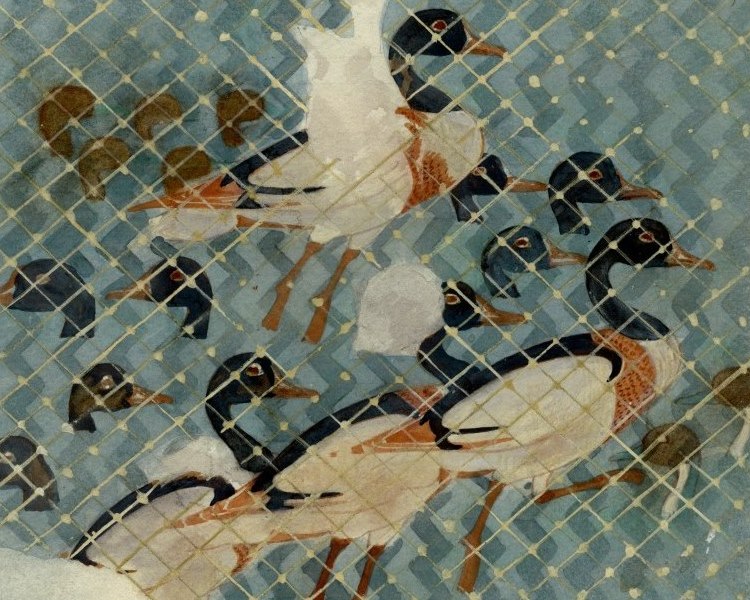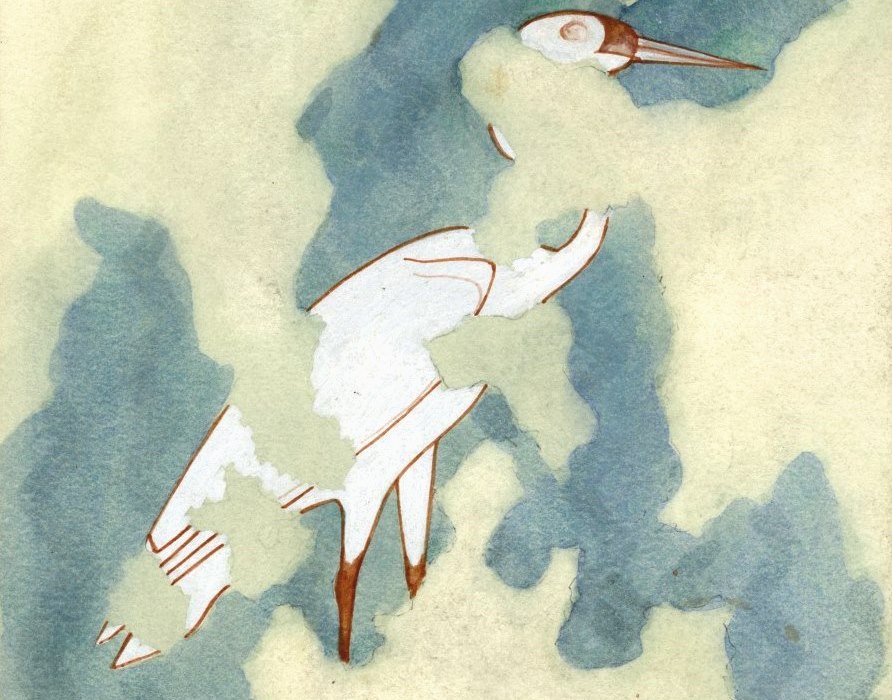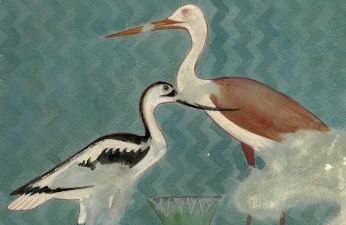The Tomb of Djehutihotep at Deir el-Bersha. Hall. North Wall.
Upper scene | Netting fowl
Reconstruction with Griffith Institute Watercolours
For the ancient Egyptians one of the most enjoyable activities in life was a day spent hunting wild birds in the marshes and pools. This activity is featured on the north wall of Djehutihotp's Hall (Inner Room) in the tomb. The top register shows Djehutihotep and his son hunting wild fowl in a pool, a clap-net has been prepared and laid under the surface of the water, after birds have settled on the surface of the pool, the two men are standing on the right bank of the pool and are activating the trap by pulling on a rope which has closed the net and captured the birds. They have successfully caught a large number of birds which includes several species of duck.
The pool is represented as a rounded-edge rectangle with marshland plants growing around the perimeter; the artist has created a neat manicured border forming an attractive frame for the encircled water. The central feature within the pool is a net formed by two adjoining trapeziums with an infill of cross-hatched lines. Above and either side of the net there are birds with their wings spread wide in alarmed flight, while in contrast their captured kin swim serenly in more organised clusters within the confines of the net. Perching upon the lower border of plants is a role-call of waterfowl; although in nature these birds would be more usually observed by the artist hunting and living amongst the reeds at the water's edge.
After trapping the birds, members of Djehutihotep’s entourage would then bundle the catch into cages or tie birds together for transporting back to the kitchens where the cooks would prepare them for the noble’s table.
Within ancient Egyptian art, hunting scenes were typically allegorical in nature serving as a mechanism through which control could be gained over the more unpredictable aspects of existence. The wild birds and animals represent the chaos in the universe, their frenetic flight from the hunters scatters them as they try to evade capture. Man restores order through the act of hunting and the captured wildlife are shown in subdued containment; these animals are not only the spoils of the hunt but also represent the conquering of chaos.
|
Griffith Institute w&d 156 [upper], 156 [lower], 157 and 158 & Newberry, P. E. El Bersheh i, pl. xxi (line drawing)
© Griffith Institute Watercolours & Drawings Project | Deir el-Bersha |
Enlarge Powered by Zoomify |
We are indebted to our Griffith Institute Research Volunteers, Lee Young and John Wyatt, who compiled the catalogue for these watercolours, and also to Dr Jaromir Malek, former Keeper of the Griffith Institute Archive, who initiated the cataloguing and digitization of this collection. Helen Murray, the first Keeper of the Archive, accessioned, numbered and arranged the watercolours in their present order.
The digitization of the watercolours was carried out by Jenni Navratil, the Institute's Digital Imaging Officer, assisted by Hana Navratilova. Francisco Bosch-Puche, Alison Hobby and Cat Warsi have all made significant contributions to all stages of this project. Elizabeth Fleming edited the final catalogue and designed the web page content.
A special thank you is extended to our colleagues at the Egypt Exploration Society in London for permission to use the line drawings published in Percy E. Newberry's El Bersheh i, The tomb of Tehuti-hetep [1894].






